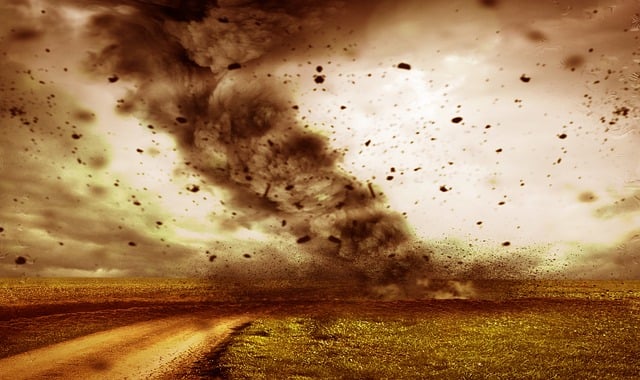Why Tornadoes Predominantly Occur in North America: Differences from Hurricanes and Typhoons, and Their Impact on Customer Support and Logistics

Introduction
Tornadoes are one of the most violent and unpredictable weather phenomena on Earth. While hurricanes and typhoons can cause widespread devastation, tornadoes remain unique in their formation, scale, and impact. Interestingly, tornadoes are predominantly a North American phenomenon, with the United States experiencing over 1,200 tornadoes annually, the highest number in the world. This article will explore why tornadoes occur mainly in North America, how they differ from larger wind events like hurricanes and typhoons, and how these distinctions impact logistics, customer support, and supply chains. Solutions to mitigate these impacts will also be discussed.
1. Why Tornadoes Predominantly Occur in North America
1.1 Geographic and Climatic Factors
North America, particularly the central United States, is highly susceptible to tornado formation due to its unique geographical and climatic conditions. This region, commonly known as "Tornado Alley," encompasses parts of Texas, Oklahoma, Kansas, Nebraska, and South Dakota. The following factors contribute to the high frequency of tornadoes:
-
Topography: The Great Plains provide a flat, expansive area where different air masses can collide.
-
Warm, Moist Air from the Gulf of Mexico: This air rises and meets cooler, dry air descending from the Rocky Mountains.
-
Jet Stream Influence: The jet stream, a high-altitude wind current, helps create wind shear, a critical component for tornado formation.
-
Seasonal Changes: Tornadoes are most common in spring and early summer when temperature contrasts are most significant.
In contrast, other regions of the world, such as Europe, Asia, and Africa, lack the same combination of warm and cool air interaction over flat terrain. Although tornadoes do occur in these regions, they are far less frequent and typically less powerful.
2. Differences Between Tornadoes, Hurricanes, and Typhoons
While tornadoes, hurricanes, and typhoons are all destructive wind events, their formation processes, scale, and duration differ significantly.
2.1 Tornadoes
-
Scale: Typically 300 to 500 meters wide, though some can reach over 3 kilometers in diameter.
-
Duration: Short-lived, usually lasting from a few minutes to an hour.
-
Wind Speed: Can exceed 300 mph (480 km/h) in the most severe cases.
-
Formation: Caused by severe thunderstorms, often influenced by supercells where warm, moist air collides with cold, dry air.
-
Impact Area: Localized, but extremely destructive.
2.2 Hurricanes and Typhoons
-
Scale: Hundreds of kilometers wide, impacting entire coastal regions.
-
Duration: Can last for days or even weeks.
-
Wind Speed: Maximum sustained winds of 74 mph (119 km/h) or higher.
-
Formation: Develop over warm ocean waters and are driven by heat and moisture.
-
Impact Area: Widespread, causing flooding, storm surges, and high winds.
2.3 Key Differences
-
Size and Duration: Tornadoes are much smaller and shorter-lived than hurricanes or typhoons but have much higher localized wind speeds.
-
Predictability: Hurricanes and typhoons are relatively predictable with modern meteorology, allowing for evacuation and preparation. Tornadoes can form with little warning, often giving only minutes to hours of lead time.
-
Damage Type: Tornadoes primarily cause structural damage from extreme winds, while hurricanes cause widespread flooding, storm surge, and wind damage.
3. Impact of Tornadoes on Logistics and Customer Support
Tornadoes, unlike hurricanes or typhoons, strike with minimal warning, making them particularly disruptive to logistics and customer support operations.
3.1 Logistics Disruption
-
Delivery Delays: Tornadoes can cause transportation routes to be blocked or destroyed, resulting in significant delivery delays.
-
Inventory Damage: Warehouses and distribution centers located in high-risk areas are vulnerable to structural damage and loss of inventory.
-
Communication Breakdowns: Power outages and damaged communication infrastructure can hinder coordination efforts.
3.2 Customer Support Challenges
-
Increased Call Volume: Customers seeking updates on delayed shipments or damaged products may overwhelm call centers.
-
Service Interruptions: Tornado-related power and internet outages can prevent customer support teams from accessing necessary systems.
-
Negative Customer Experience: Lack of timely responses or unclear communication can lead to dissatisfaction and reputational damage.
4. Mitigation Strategies and Solutions
4.1 Infrastructure Resilience
-
Constructing warehouses and data centers with reinforced structures designed to withstand high winds.
-
Implementing redundant communication systems to ensure connectivity during outages.
4.2 Predictive Analytics and AI Integration
-
Using predictive analytics to anticipate tornado-prone periods based on historical data.
-
Implementing AI-driven chatbots to handle increased customer inquiries during service disruptions.
-
Call centers using AI-based routing systems report a 20% improvement in call handling efficiency during emergencies (Forrester).
4.3 Diversified Shipping Routes
-
Establishing alternative shipping routes to mitigate disruptions caused by tornado-related road closures.
-
Utilizing air and rail transport when road networks are compromised.
4.4 Proactive Communication Strategies
-
Keeping customers informed of potential delays and providing estimated timelines for resolution.
-
Implementing automated notifications through SMS and email to enhance transparency.
-
Companies that employ proactive communication strategies report a 22% decrease in negative customer feedback during disasters (Zendesk).
5. Conclusion
Tornadoes remain a uniquely North American challenge, driven by geographic and climatic conditions. While hurricanes and typhoons are predictable enough to allow for extensive preparation, tornadoes often strike with little warning, complicating logistics and customer support. By leveraging predictive analytics, AI-driven systems, and diversified infrastructure, companies can better withstand the disruptions caused by tornadoes and maintain consistent service levels.


